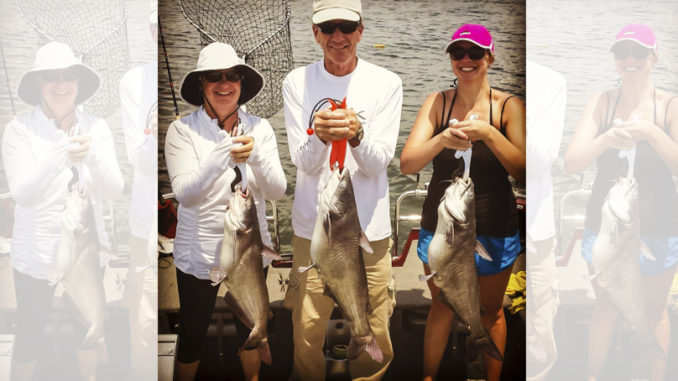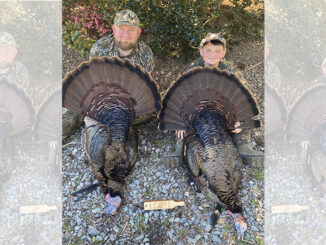
Catfish feast on mussel beds in late summer
Midsummer marks the end of the blue catfish spawn at Kerr Lake on the North Carolina/Virginia border. While going unnoticed by many anglers, Wes Jordan of Creedmoor patterns the tail-end of their reproductive cycle, heading to the lower side of the lake where mussel beds abound to drop in on blues recuperating after their duties.
“By late July and August, the catfish are coming off the spawn pretty good,” said Jordan, who runs Redbeard Cats Guide Service. “Once the reproducing part is over, the males sit on the nest for about 3 weeks. When they come off the nest, they’re hungry and aggressive.”
As the only forage available without a means of escape, Jordan (919-619-5753) said that mussels are the perfect meal for an exhausted animal in need of filling its stomach.
“They use the mussel beds to rejuvenate because it’s easy food,” he said. “They’ll be so full of shells, you could shake them like maracas.”
Focusing on the lower end of Kerr’s 50,000 acres — because of its greater depth — Jordan said there are mussels on most of the points and flats on the main lake and into the deeper creeks in 10 to 20 feet of water. However, those areas with sandier bottoms will hold more, and finding the largest concentrations can be expedited by increasing the sensitivity on broadband sonar to register the hard bottom or side-imaging to illuminate the shells.
Trolling is a good tactic for late summer catfish
“You’ll know you’re in the right place because the rod tips will start going crazy as they bump over the mussels when you start trolling,” he said.
Once on target, Jordan puts out eight rods as he trolls between a .5 and 1 mph. Two rods pull bobbers with a free-lined, live gizzard shad straight behind the boat, and two rods pull Santee rigs with cut white perch straight back. Two more rods run off each side of the boat, pulling Santee rigs with perch on planer boards to increase the width of his spread. His bottom rigs are weighted by 1- to 2-ounce slinky weights ahead of a 3-inch cigar float and 10/0 offset circle hook. He has 30-pound mono on his reels, with a 60-pound mono leader.
The white perch Jordan uses as his primary bait ties into his second pattern.
“The perch school up real tight in July and August, and the blues will be right there with them,” he said. “You can go out with a Sabiki rig and load the bait tank in 15 minutes if you’re in the right spot. Then, I’ll turn around and troll the same area I caught them.”
“First thing in the morning, the perch will usually be in the backs of the creeks; they’re pretty easy to see on the fish finder,” he said. “As the sun gets up, they’ll move into deeper and deeper water. I might start fishing in 5 feet and end up in 30 feet out around the points.”




